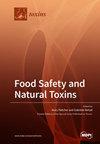Three Ecological Models to Evaluate the Effectiveness of Trichoderma spp. for Suppressing Aflatoxigenic Aspergillus flavus and Aspergillus parasiticus
IF 3.9
3区 医学
Q2 FOOD SCIENCE & TECHNOLOGY
引用次数: 0
Abstract
Chemical pesticides help reduce crop loss during production and storage. However, the carbon footprints and ecological costs associated with this strategy are unsustainable. Here, we used three in vitro models to characterize how different Trichoderma species interact with two aflatoxin producers, Aspergillus flavus and Aspergillus parasiticus, to help develop a climate-resilient biological control strategy against aflatoxigenic Aspergillus species. The growth rate of Trichoderma species is a critical factor in suppressing aflatoxigenic strains via physical interactions. The dual plate assay suggests that Trichoderma mainly suppresses A. flavus via antibiosis, whereas the suppression of A. parasiticus occurs through mycoparasitism. Volatile organic compounds (VOCs) produced by Trichoderma inhibited the growth of A. parasiticus (34.6 ± 3.3%) and A. flavus (20.9 ± 1.6%). The VOCs released by T. asperellum BTU and T. harzianum OSK-34 were most effective in suppressing A. flavus growth. Metabolites secreted by T. asperellum OSK-38, T. asperellum BTU, T. virens OSK-13, and T. virens OSK-36 reduced the growth of both aflatoxigenic species. Overall, T. asperellum BTU was the most effective at suppressing the growth and aflatoxin B1 production of both species across all models. This work will guide efforts to screen for effective biological control agents to mitigate aflatoxin accumulation.评估毛霉抑制黄曲霉和寄生曲霉有效性的三种生态模型
化学农药有助于减少作物在生产和储存过程中的损失。然而,与这种策略相关的碳足迹和生态成本是不可持续的。在这里,我们使用了三种体外模型来描述不同的毛霉菌种如何与两种黄曲霉毒素生产者--黄曲霉和寄生曲霉--相互作用,以帮助开发一种针对黄曲霉菌种的气候适应性生物控制策略。毛霉的生长速度是通过物理相互作用抑制黄曲霉菌株的关键因素。双板试验表明,毛霉主要通过抗生素作用抑制黄曲霉,而对寄生曲霉的抑制则是通过寄生作用进行的。毛霉产生的挥发性有机化合物(VOCs)抑制了寄生菌(34.6 ± 3.3%)和黄曲霉(20.9 ± 1.6%)的生长。T. asperellum BTU 和 T. harzianum OSK-34 释放的挥发性有机化合物对抑制黄曲霉的生长最为有效。黑孢蘑菇 OSK-38、黑孢蘑菇 BTU、黑孢蘑菇 OSK-13 和黑孢蘑菇 OSK-36 分泌的代谢物可减少两种黄曲霉菌的生长。总体而言,在所有模型中,T. asperellum BTU 能最有效地抑制两种黄曲霉毒素的生长和黄曲霉毒素 B1 的产生。这项工作将指导筛选有效的生物控制剂,以减轻黄曲霉毒素的积累。
本文章由计算机程序翻译,如有差异,请以英文原文为准。
求助全文
约1分钟内获得全文
求助全文
来源期刊

Toxins
TOXICOLOGY-
CiteScore
7.50
自引率
16.70%
发文量
765
审稿时长
16.24 days
期刊介绍:
Toxins (ISSN 2072-6651) is an international, peer-reviewed open access journal which provides an advanced forum for studies related to toxins and toxinology. It publishes reviews, regular research papers and short communications. Our aim is to encourage scientists to publish their experimental and theoretical results in as much detail as possible. There is no restriction on the length of the papers. The full experimental details must be provided so that the results can be reproduced.
 求助内容:
求助内容: 应助结果提醒方式:
应助结果提醒方式:


